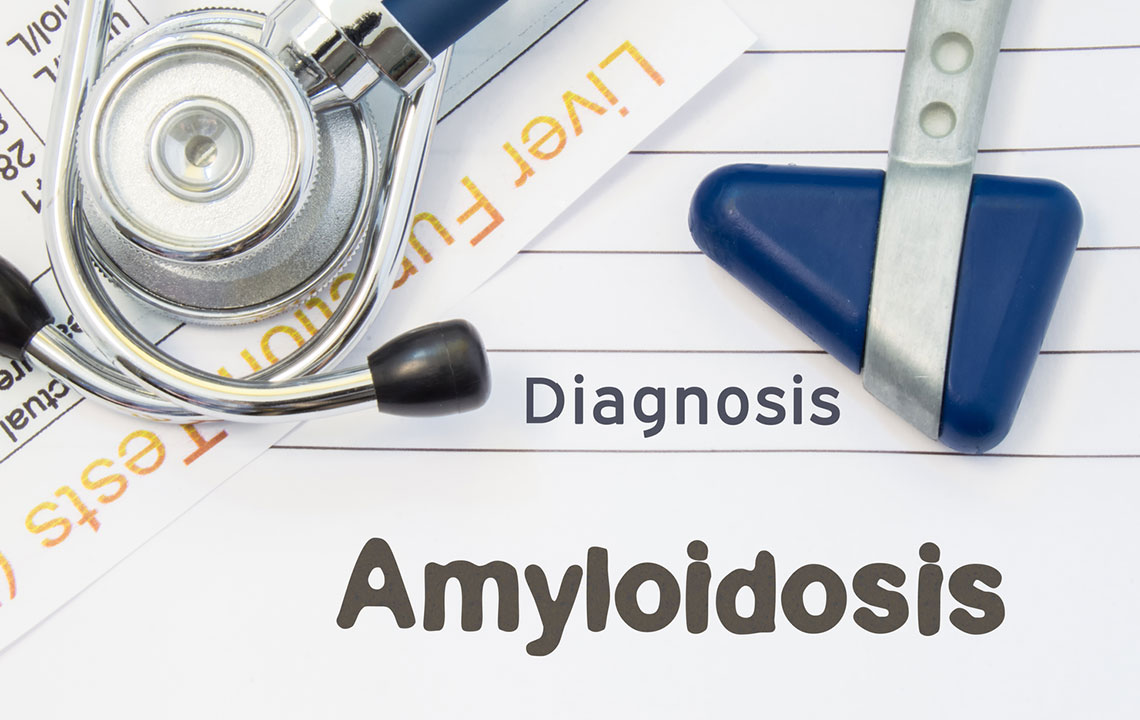Everything About the Different Types of Amyloidosis
Despite the progress in the field of medicines, there are certain ailments that cannot be cured completely. In such cases, one has to rely on treatment methods, like clinical trials and other alternatives to curb the symptoms of the said condition. Amyloidosis is one such condition. This incurable condition affects about 4,000 people every year.

Amyloidosis occurs when a substance called amyloid starts building up in the organs. Amyloid is an abnormal protein which is produced in the bone marrow; this is eventually deposited in any tissue or organ. The condition can be life-threatening as it has the ability to affect different organs. Usually, the heart, kidneys, liver, spleen, nervous system, and digestive tract are targeted by the abnormal protein. It is essential to identify the type of amyloidosis as severe conditions can lead to organ failure.
Types of amyloidosis
There are six types of amyloidosis and each of these affects different organs. Although there is no permanent cure, identifying the type of amyloidosis can help determine the treatment course.
- AL (primary) amyloidosis
AL (primary) Amyloidosis, also known as amyloid light-chain amyloidosis, is the most common type of amyloidosis. In this type, the body’s immune system produces abnormal antibodies called light chains. Under normal circumstances, the cells in the body marrow—plasma cells—produce proteins called antibodies that fight off infections. However, for certain unexplained reasons, the plasma cells start producing abnormal antibodies which cannot be broken down. These mutated antibodies then begin circulating in the bloodstream and get deposited in organs throughout the body. This results in organ damage. The most common organs that are affected by AL amyloidosis are the heart, kidneys, nerves, gut, skin/soft tissue, and tongue. Often, this abnormal plasma cell behavior is linked with a blood cancer called multiple myeloma. - AA (secondary) amyloidosis
Amyloidosis is identified as AA secondary amyloidosis when a protein called serum amyloid A is detected. This protein is produced by the body as a response to inflammation or any sort of infection. It is essential to understand that high levels of protein in the body do not lead to amyloidosis, but it does increase amyloid deposits over time. This is why certain diseases like rheumatoid arthritis or chronic infections like chronic tuberculosis can trigger long-lasting inflammation. This ultimately results in AA amyloidosis deposits over several years. This type of amyloidosis is known to affect the kidneys, liver, spleen, and rarely the heart. - Familial amyloidosis or ATTR amyloidosis
This type of amyloidosis is an inherited condition. The body produces a mutant form of a protein called transthyretin (TTR). This mutated protein goes on to form amyloid fibrils. Additionally, several different types of mutations have been identified in such cases and the most common one is V-122-I. This form of amyloidosis usually affects the heart and the nerves, and sometimes other organs but this phenomenon is rare. Though familial amyloidosis is a serious ailment, the prognosis for this condition is overall better than AL amyloidosis as it progresses at a slower rate. Moreover, it is easier to diagnose this form of amyloidosis and treatment it. Since the disorder is inherited, genetic screening can be beneficial to identify which patient’s family members carry the mutation. - Senile systemic amyloidosis
This type of amyloidosis is similar to ATTR amyloidosis, except that the transthyretin protein deposited is not mutated but normal. This type of protein doesn’t form amyloid deposits like its mutated counterpart does. Which is why patients only develop this condition as they age (usually at 65 years of age or older). Since amyloidosis deposits build-up at a slower rate in senile systemic amyloidosis, the prognosis is comparatively better than AL amyloidosis and ATTR amyloidosis. - Dialysis-related amyloidosis (DRA)
This form of amyloidosis is more common among older people and people who have been on dialysis for more than 5 years. As the name indicates, this type of amyloidosis develops due to the deposits of beta-2 microglobulin in the blood over a period of time. These deposits can build up in different tissues but they usually affect the bones, joints, and tendons. - Organ-specific amyloidosis
This type of amyloidosis causes deposits of amyloid proteins in a single organ; this includes the skin as well (cutaneous amyloidosis). Though some types of amyloid deposits are linked to Alzheimer’s disease, the brain is rarely affected by this condition.
Amyloidosis is a life-threatening ailment and identifying the type one suffers from can help them receive the right treatment. This will thereby help them manage this chronic condition.


